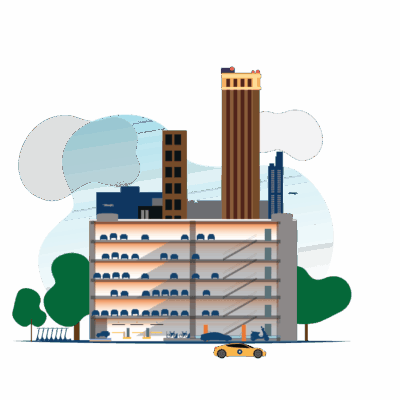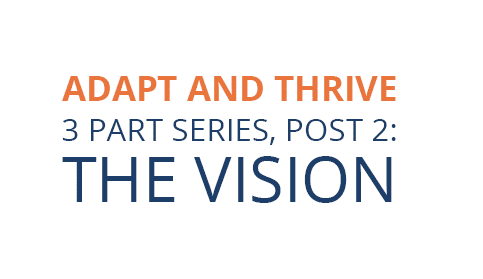A concise, three-part series exploring the imperatives to success in a crisis, the future of mobility and the smart city with parking at the epicenter, and the practical steps we can take now to make that future possible.
Part I: The Framework | Part II: The Vision | Part III: The Playbook
PART II: THE VISION
Built with the Future in Mind
Reed Hastings and Marc Randolph built Netflix with the future in mind. When the technology was ready, movies would be streamed on the web. In 2007, while others saw little value in pursuing streaming video, Hastings and co. forged ahead with sizable investments that would lay the foundations for incredible customer acquisition, original content production, and operating profit.
With a bold vision and strong execution, Netflix created its future and in so doing, it has reshaped content consumption behaviors transformed consumer expectations in entertainment and watched billion-dollar enterprises scramble to catch-up. This is a similar story of many category-creating leaders, like Salesforce and SAP, who built with the digital future in mind.
And so, we, the parking industry, must begin with the future in mind and create it with a powerful combination of selective defense and comprehensive offense. A future that might call for adaptation as we create it, but one to which we are no longer reactive. When we get it right, it need only be done once. When we get it right, we win by building for tomorrow, today.
The Key to Unlocking the Smart City? Adapting Parking Infrastructure.
Parking assets are the keys to the ‘smart city.’ Again…parking assets are the keys to the ‘smart city.’ And there’s tremendous value in unlocking the ‘smart city.’
Parking assets are poised, physically, at the center of the mobility revolution. They have the excess capacity that the growing mobility ecosystem needs to get cars off streets, to get scooters off sidewalks, and to get people moving forward instead of standing still. In doing so, these parking assets become Mobility Hubs.

A Mobility Hub is a parking asset powered by an operating system that maximizes revenue potential by uniquely addressing the market opportunity in its specific geography.
With the right technology, intelligence and connectivity, a Mobility Hub may only ever park cars if that represents the geographical need and highest revenue-generating potential. However, with an ever-growing pool of ways that people, businesses, goods, and services travel from point A to point B, the revenue-generating potential of Mobility Hubs is becoming increasingly diverse. The emergence of e-commerce, e-scooters, EVs, transportation network companies (e.g. Uber), and the anticipated rise of autonomous vehicles (AVs) and drone delivery all represent opportunities for parking asset owners and operators. And so, we must adapt to capitalize…and thrive.
Winning by Building for Tomorrow, Today
So, what are the adaptations necessary to reshape the future of urban mobility? In an extension of our biological metaphor, we turn to the observable and measurable means of adaptation in nature, examine parking’s parallels, and set the stage for our own playbook.
1). Behavioral
Bears hibernate to escape cold; birds migrate to warmer winter climates; and consumer habits and behaviors have evolved as technology continues to advance. Just as the smartphone ushered in expectations of mobile-enabled experiences, today’s crisis may necessitate touchless parking and contactless payment experiences. Five consecutive quarters of triple-digit growth in sales of FlashParking’s touchless solutions had been driven by our clients’ desire to deliver world-class customer experiences. Now, the focus is safety. Parking needs the data to understand these changes in behavior and customer expectations, and extensible technology to accommodate them.

2). Structural
Environments shape appearance through structural adaptations. With the diversification of offerings, as isolated parking assets evolve into connected Mobility Hubs, infrastructure must be reconfigured to support these new means of revenue generation.
3). Physiological
Physiological changes aren’t as apparent on the outside. Customers may not distinguish between variations in parking hardware, but the chemistry of an organism is fundamental to its function. This consideration isn’t about hardware and software as two distinct entities, it’s now about an operating system built to create the future, ready to adapt along the way.
With a strategic framework in place (Part 1: The Framework) and a bold vision for the future established, with behavioral, structural, and physiological adaptations providing guidance for the strategic moves we must make, we turn to The Playbook.
Click the button to download the full three-part series.

